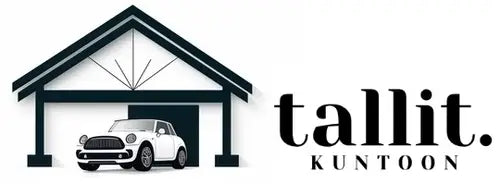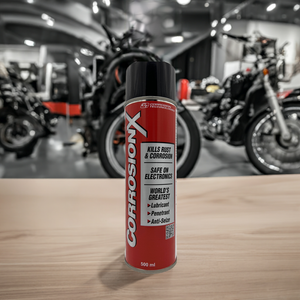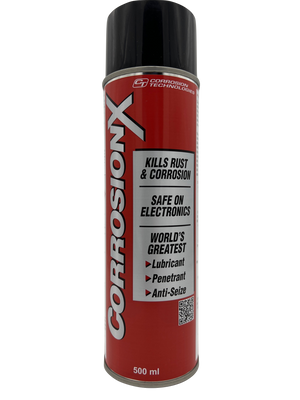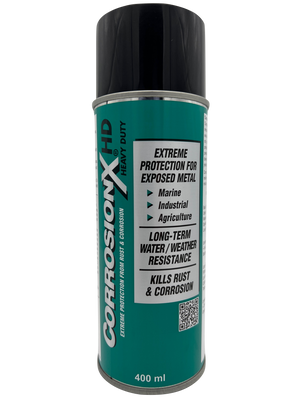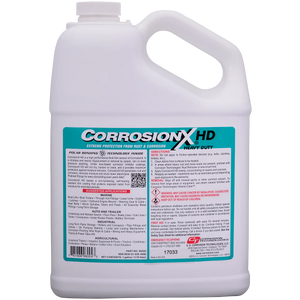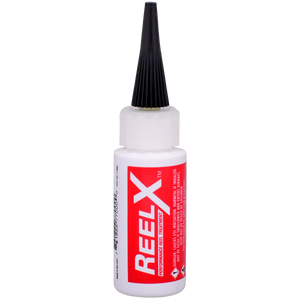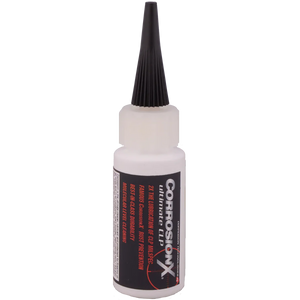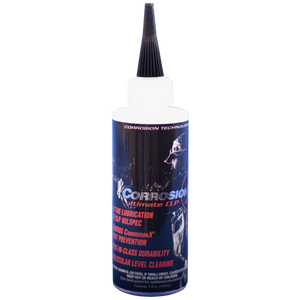Tanks have long been a symbol of raw power and formidable presence on the battlefield. These steel giants are engineered to withstand punishing conditions—ranging from scorching deserts to frigid arctic expanses—and still deliver devastating firepower. At the heart of a tank’s lethality lies its cannon, a weapon system so essential that its reliability and accuracy can tip the scales in intense combat scenarios.
But have you ever wondered what keeps these monstrous cannons firing reliably despite the abuse they endure? Enter the unsung hero: gun oil. Selecting the right gun oil, such as CorrosionX for Guns, is not merely a question of brand loyalty or routine maintenance—it is a matter of life and death on the battlefield. In this article, we will dive deep into how gun oil preserves a tank cannon’s performance, the special challenges that these massive weapons face, and why a high-quality product like CorrosionX for Guns stands out as the top choice. By the end, you’ll walk away with a thorough understanding of how the right lubrication strategy safeguards both the accuracy and the longevity of tank cannons.
(Estimated reading time: ~15-20 minutes. This is a comprehensive discussion intended to build your knowledge of tank cannon maintenance, lubrication challenges, and best practices for applying gun oil in demanding military environments.)
The Physics of Tank Cannons – Unraveling the Power Behind the Boom
Understanding the Ballistic Forces Involved
Firing a projectile from a tank cannon involves a complex interplay of ballistic forces:
- High-Pressure Expansion: When the propellant ignites, gases expand almost instantaneously, propelling the shell down the barrel at tremendous speed.
- Friction and Heat: The shell’s movement through the barrel generates friction and heat, which can affect barrel integrity if not mitigated.
- Recoil: Newton’s Third Law states that every action has an equal and opposite reaction. The cannon (and thus the entire tank) experiences a sharp recoil that must be absorbed and managed by recoil systems.
With so much happening in microseconds, it’s no wonder that tank cannons need meticulous maintenance. A single oversight—like subpar lubrication—can cause metal scoring, barrel distortion, or even catastrophic failure.
The Importance of Reliability in Cannon Design
Unlike smaller firearms, tank cannons don’t typically fire multiple shots in quick succession unless the operation demands it. However, each shot is a massive event. Combat scenarios might require rapid follow-ups or single high-stakes shots. Reliability here means:
- No Jams or Blockages: The breech mechanism must function flawlessly.
- Consistent Accuracy: Every shot should land where the fire-control system has aimed it.
- Immediate Readiness: Tanks are often expected to fire at a moment’s notice.
Any mechanical hitch—be it from wear, rust, or improper lubrication—could degrade the cannon’s performance and potentially jeopardize an entire mission.
Understanding the High-Stakes World of Tank Cannon Maintenance
Why Tank Cannons Demand Meticulous Care
Anyone who has handled small arms knows that routine cleaning and lubrication can mean the difference between a reliable tool and a jam-prone headache. Now, multiply that concept by a thousand to imagine the stresses faced by a main battle tank’s cannon. Unlike small arms that may fire a few rounds during a mission, tank cannons can unleash shells that weigh several pounds each, traveling at speeds exceeding the sound barrier. When each shot is unleashed, the internal pressure spikes to incredible levels, and temperatures soar as superheated gases expand inside the barrel.
The result? Extreme mechanical stress and constant exposure to wear that can degrade a cannon’s accuracy and lifespan. Missing the mark in tank warfare can have catastrophic consequences. A single inaccurate shot could compromise not just the mission but the tank’s crew, or even the success of an entire operation. Consequently, the correct approach to cannon care and lubrication is no casual affair: it’s a mission-critical part of overall military preparedness.
The Hidden Dangers Lurking in Harsh Environments
Modern military operations aren’t limited to picturesque training grounds. Tanks must function optimally in everything from dusty Middle Eastern deserts and steaming jungles to frigid polar regions. Such environments bring with them a host of challenges:
- Sand and Dust Infiltration: Fine particulates can settle into any gap or crevice, causing abrasive wear on critical components.
- Moisture and Humidity: High moisture accelerates oxidation, leading to rust and corrosion.
- Extreme Heat and Cold: Hot conditions can thin some oils to the point of ineffectiveness, while sub-zero temperatures might thicken them, hampering their ability to lubricate moving parts.
All these environmental factors conspire to damage the metal surfaces inside the cannon, gradually leading to diminished performance and an increased risk of malfunctions. Without a top-tier gun oil to serve as a protective barrier and lubricant, even the most advanced tank cannon can degrade into an unreliable piece of hardware.
The Science Behind Gun Oil – A Catalyst for Accurate Firepower
Lubrication 101 – Reducing Friction and Wear
When we talk about gun oil in any context—be it for small arms or massive tank cannons—the fundamental concept is reducing friction between moving metal parts. But for tank cannons, the significance is magnified due to the immense forces at play. Each time a round is fired, metal surfaces inside the breech, recoil mechanism, and barrel come into contact under enormous pressure. Over time, friction causes microscopic pitting, scoring, or even warping of components, all of which can degrade accuracy.
High-quality lubricants like CorrosionX for Guns excel in penetrating the micro-crevices of metal surfaces. They form a thin, durable film that cushions each surface from the other, minimizing friction and heat build-up. In essence, the oil acts like a shock absorber for metal parts, ensuring they slide fluidly against each other rather than grinding. This effect is particularly vital for large-caliber weapons, where even slight deviations in alignment or function can result in significant ballistic inconsistencies.
Corrosion Prevention – Stopping Rust Before It Starts
If friction is the enemy that wears parts down from the inside, corrosion is the specter that attacks from the outside. Rust and oxidation are natural chemical reactions in which metal reacts with environmental elements—particularly oxygen and moisture—to form iron oxides and other corrosive compounds. This isn’t just a cosmetic problem; rust can weaken metal, create structural flaws, and lead to jammed mechanisms.
CorrosionX for Guns is specifically formulated with inhibitors that cling to metal surfaces, effectively sealing out moisture. Think of it as a weatherproof raincoat for your cannon’s internals, preventing water molecules from seeping in and initiating rust formation. Over time, this protective film ensures that every crucial part of the cannon remains free from the degradation that can sabotage a weapon’s reliability and accuracy.
Maintaining Precision – The Direct Link Between Oil and Accuracy
For a tank cannon, accuracy is everything. While modern fire control systems provide advanced targeting solutions, the basic mechanical integrity of the cannon must also be in top condition. Any rust patch, pitted surface, or lack of lubrication can change the internal ballistics of a projectile’s journey through the barrel. This minute deviation may result in the shell drifting off target at long ranges.
Moreover, consistent lubrication ensures that each subsequent round experiences the same firing conditions as the previous one. This consistency translates into predictable recoil patterns and uniform muzzle velocity. In a battlefield scenario, when targets can be miles away and moving, you need every ounce of consistency to land that critical shot. Simply put, if you want your tank’s advanced targeting system to work effectively, your cannon must be in impeccable shape, and that begins with thorough cleaning and the application of premium gun oil.
CorrosionX for Guns – Why This Oil Reigns Supreme
Military Credentials and Trusted Performance
In any industry, proven results speak volumes. When a product is trusted by U.S. authorities and NATO forces, it’s a clear signal that it stands out among competitors. This is especially true in military applications, where reliability can’t be compromised by marketing hype.
CorrosionX for Guns has undergone extensive real-world testing in a variety of platforms—from small arms deployed in special operations to the heavy artillery used in large-scale mechanized warfare. When a lubricant can endure the punishing tests and evaluations demanded by organizations like the U.S. military and NATO, you know it’s not a generic brand but a rigorously vetted solution.
Longevity and Endurance – Less Frequent Maintenance
One of the top complaints among maintenance crews and soldiers alike is the frequency of lubrication required to keep equipment functioning. Cheaper or lower-grade oils evaporate or degrade quickly, leaving surfaces vulnerable to friction and corrosion. This not only increases the burden of maintenance but also raises the risk of failure if the oil fails before the crew can reapply it.
CorrosionX for Guns is formulated to offer long-lasting protection. Once you apply it, the oil remains on the surface longer, does not evaporate easily, and retains its viscosity through a wide range of temperatures. Essentially, you don’t have to worry about whether your oil is still there performing its job—it sticks around, saving time and resources.
Adaptability to Multiple Environments
Tanks rarely get to choose their battleground. Military missions can pivot in a flash from one climate to another. As a result, a product’s ability to adapt to extreme weather conditions is absolutely crucial. CorrosionX for Guns maintains consistency in:
- Hot, dry deserts where ambient temperatures can exceed 120°F (49°C).
- Humid, rainy regions that foster rust and other corrosion-related issues.
- Freezing theaters where temperatures can plunge below -40°F (-40°C).
The oil’s chemistry ensures that it doesn’t turn into a sludge in the cold or become watery in extreme heat. For a tank operator, this reliability means that no matter where the next mission leads, the cannon will perform with unwavering effectiveness.
Environmental Challenges – How Gun Oil Mitigates Operational Risks
Desert Operations – Battling Heat and Abrasion
Desert warfare offers a unique brand of punishment for machines. The intense heat combined with blowing sand can turn any piece of equipment into a grinding mess. In such conditions:
- Sand infiltration can cause immediate and long-term damage.
- High temperatures may break down lesser lubricants, leading to metal-on-metal contact.
Here’s where CorrosionX for Guns shines. It forms a protective film that repels dust and sand particles, reducing the abrasive effect they have on internal components. Additionally, its heat-resistant properties keep it from thinning out, ensuring continuous lubrication even when the mercury soars.
Coastal and Jungle Regions – High Humidity, High Risk
In humid or wet climates, the primary battle is against moisture. Without a high-grade protective layer, water can creep into the cannon’s metal surfaces, setting the stage for rust and pitting corrosion. Over time, these seemingly minor rust patches can expand, eventually weakening the structure of the barrel or interfering with the breech’s operation.
CorrosionX for Guns is engineered with powerful water-repellent qualities. Once applied, it acts as a shield, driving out moisture and preventing it from settling. Even if you’re operating in tropical rains or near salty sea air, the protective oil film remains intact, cutting down on corrosion risks and maintaining full operational readiness.
Arctic Deployments – Ensuring Performance at Sub-Zero
One overlooked challenge of cold-weather operations is that many lubricants become thicker or even freeze outright, turning from liquid to something more like heavy syrup. When this happens, the friction in moving parts escalates and can lead to misfires or slow reaction times—serious issues for any weapon system.
In sub-zero environments, CorrosionX for Guns stands out by maintaining its viscosity, offering reliable lubrication without gumming up. Soldiers don’t have to wrestle with sluggish breech mechanisms or worry that a stiff recoil system will fail at a critical moment. It’s exactly this reliability that makes CorrosionX for Guns a trusted companion for vehicles and weaponry operating in arctic or mountainous regions.
Best Practices – Applying Gun Oil for Maximum Effect
Step 1 – Thorough Cleaning Before Lubrication
Before any new coat of oil is applied, it’s essential to clean the cannon’s internal components. This means removing carbon buildup, old grease, dust, sand, or any other contaminants. Failing to do so can result in trapped debris that will keep grinding away at the metal even under a fresh coat of oil. This initial cleaning process can involve specialized solvents and brushes to ensure no residue is left behind.
Step 2 – Strategic and Even Application
When the cleaning stage is complete, it’s time to apply CorrosionX for Guns. More is not always better—what you’re aiming for is an even, thin film that coats every metal surface without pooling. Pay special attention to critical points like:
- Barrel interior
- Breechblock and breech ring
- Recoil mechanism
- Firing pin channels and rotating or sliding surfaces
An effective technique might involve a lint-free cloth or specialized applicators designed for cannons. The key is to spread a uniform layer that can penetrate microscopic pores in the metal.
Step 3 – Regular Inspections and Reapplication
Even though CorrosionX for Guns is known for its longevity, extreme conditions can still erode its effectiveness over time. Scheduling regular inspections allows you to spot areas where the lubricant may have been worn off due to high friction or environmental exposure. Early detection ensures you can reapply the oil as needed, preventing small maintenance issues from escalating into costly or dangerous failures.
Going Beyond Lubrication – The Bigger Picture of Tank Maintenance
Synergy of Systems – Why Lubrication Alone Isn’t Enough
While gun oil is crucial, tank cannon maintenance is also about harmonizing multiple systems: the breech, recoil cylinders, targeting optics, and even the turret’s power supply. Proper calibration of these subsystems, combined with robust cleaning and lubrication protocols, contributes to a fully operational tank. If one system is neglected—say the recoil system—it can still cause undue stress on the cannon, negating the advantages of using premium lubricants.
Impact on Soldier Safety and Mission Success
A cannon that doesn’t fire reliably can be a death sentence in active combat. Not only is there a direct threat to the crew, but a failed shot in the heat of a firefight can lead to strategic setbacks. High-quality gun oil like CorrosionX for Guns significantly boosts the reliability of every shot, thereby increasing the tank’s overall combat effectiveness. In a broader sense, well-maintained cannons can change the outcome of entire missions, highlighting how a relatively simple concept like lubrication can carry massive operational importance.
Budget and Lifecycle Considerations
Replacing a tank cannon or entire turret assembly is astonishingly expensive. By investing in top-grade gun oil, you’re effectively extending the life of critical components. This not only keeps operational readiness high but also optimizes budget allocations over the long term. Defense organizations worldwide operate under strict financial oversight, and cost-effective solutions that enhance equipment reliability are seen as paramount. CorrosionX for Guns, by minimizing wear and preventing rust, helps maintain the cannon in excellent condition for many years, reducing the frequency of costly repairs or overhauls.
Common Missteps – Avoiding Pitfalls in Cannon Lubrication
Overlooking Environmental Match
Different theaters of operation may call for slight variations in maintenance routines. A “one-size-fits-all” approach can lead to suboptimal results. For instance, if you’re stationed in a desert environment, skipping specialized cleaning for sand and dust can undermine even the best oil. In humid regions, not applying an additional rust-preventive measure can lead to corrosion. While CorrosionX for Guns is versatile across climates, your overall protocol must still be environment-specific.
Applying Too Much or Too Little Oil
Excess oil can attract more dust and debris, potentially forming a sludge that interferes with mechanical parts. Conversely, using too little oil leaves parts vulnerable to friction and rust. Striking a balance is essential. When in doubt, consult the product’s guidelines and any military technical manuals for recommended application rates specific to your weapon system.
Ignoring Small Signs of Wear
Small scratches or discoloration inside the barrel might seem like minor issues, but they can snowball into significant problems if ignored. Regular bore scoping and visual inspections of the cannon’s internal surfaces can catch these early signs. Once detected, applying the right remedial steps—like thorough cleaning, polishing, and re-lubrication—can avert catastrophic failures.
Real-World Application – From Historical Lessons to Modern Warfare
Maintaining tank cannons isn’t just a theoretical exercise. Historical records and contemporary battlefield reports underscore the importance of proper lubrication, materials, and training.
Historical Perspective – The Impact of Neglect
Looking back, tanks in the mid-20th century often operated under less-than-ideal maintenance conditions. Crews on prolonged campaigns had limited access to specialized oils and cleaning supplies. The result? Corroded barrels, jammed recoil systems, and a higher incidence of misfires—sometimes at the worst possible moments.
This legacy taught modern militaries the critical lesson: Investing in maintenance isn’t optional; it’s fundamental . Even with advanced targeting computers and high-grade ammunition, a neglected barrel will sabotage accuracy and reliability every time.
Insights from Modern Combat Scenarios
Fast forward to today’s high-tech armies. Despite leaps in materials science, advanced optics, and robust electronics, the fundamentals remain the same. A tank cannon is still a large metal tube subject to incredible ballistic forces. Modern digital control systems can’t fix a seized breech or a badly rusted barrel.
Recent battlefield experiences in desert and urban environments highlight how quickly sand and dust can degrade performance. Likewise, maritime operations reveal that salt air is no less of a menace than it was decades ago. Hence, the push for cutting-edge lubricants and comprehensive maintenance programs continues unabated.
Future Outlook – Innovations in Lubrication and Cannon Technologies
Where do we go from here? As robotics, AI, and next-generation materials become more commonplace, tank cannons will also evolve. But that doesn’t mean lubrication is going away. If anything, it’s likely to become even more specialized .
Automated Maintenance and Condition Monitoring
Some militaries are investing in embedded sensors that monitor barrel temperature, number of shots fired, and shock profiles in real-time. This data can feed into an AI-driven maintenance system that automatically recommends when lubrication should be reapplied or when a part is nearing its service limit.
Coupled with improved lubricants, this could reduce the burden on crew members while ensuring the cannon’s readiness:
- Real-Time Diagnostics: If friction spikes or if a portion of the barrel overheats, an alert can be generated immediately.
- Predictive Analytics: Drawing from historical data, the system can forecast future wear and schedule maintenance proactively.
- Reduced Human Error: Automated reminders and sensors help mitigate oversights in routine checks.
Automated Maintenance and Condition Monitoring
Some militaries are investing in embedded sensors that monitor barrel temperature, number of shots fired, and shock profiles in real-time. This data can feed into an AI-driven maintenance system that automatically recommends when lubrication should be reapplied or when a part is nearing its service limit.
Coupled with improved lubricants, this could reduce the burden on crew members while ensuring the cannon’s readiness:
- Real-Time Diagnostics: If friction spikes or if a portion of the barrel overheats, an alert can be generated immediately.
- Predictive Analytics: Drawing from historical data, the system can forecast future wear and schedule maintenance proactively.
- Reduced Human Error: Automated reminders and sensors help mitigate oversights in routine checks.
Frequently Asked Questions (FAQs)
-
Why is CorrosionX for Guns recommended specifically for tank cannons?
CorrosionX for Guns stands out because it combines superior friction reduction, rust prevention, and temperature stability in a single formula. Its proven success in demanding environments—validated by use among U.S. and NATO forces—makes it an obvious choice for tank cannon maintenance. -
How often should I reapply gun oil to a tank cannon?
The frequency depends on factors like environmental conditions (dusty deserts, humid jungles, or arctic climates) and the intensity of usage (rate of fire). Regular inspections are key. In especially harsh conditions, reapplication might be needed more frequently—potentially after every major operation or extended deployment. -
Can CorrosionX for Guns function effectively in sub-zero temperatures?
Yes. Its advanced formulation prevents it from gelling or thickening, even in severe cold. This ensures that the recoil mechanism and other moving parts remain well-lubricated and responsive in freezing environments. -
Is CorrosionX for Guns suitable for other weapon systems?
Absolutely. While this article focuses on tank cannons, CorrosionX for Guns is versatile enough for use on a variety of weapon platforms, including small arms, heavy artillery, and even aircraft-mounted guns. -
Does using gun oil in desert conditions create more dust buildup?
When applied correctly in a thin, even layer, CorrosionX for Guns does not attract excess dust. In fact, it forms a protective barrier that helps prevent sand particles from binding to metal surfaces, reducing the likelihood of abrasive wear. -
What should be done if rust is already present on the cannon’s surface?
The immediate step is to remove the rust carefully—potentially through mechanical cleaning (brushing, scraping) or with specialized rust removers. Once the surface is rust-free, apply CorrosionX for Guns to prevent future corrosion and to protect the newly exposed metal. -
How does gun oil affect ballistic performance at long range?
Proper lubrication ensures consistent internal ballistics by stabilizing friction levels inside the barrel. Over time, this leads to more predictable recoil patterns and muzzle velocities, thereby enhancing accuracy at long distances. -
Is there a recommended technique for applying CorrosionX for Guns to large-caliber weapons?
Yes. Use a high-quality, lint-free cloth or specialized applicators. Focus on a thin, uniform coating. You want just enough oil to create a continuous film without pooling or dripping.
Conclusion – Striking the Perfect Balance Between Science and Practice
Tank cannons are mechanical marvels, channeling enormous power with astonishing precision. But this doesn’t happen by accident or default. Effective lubrication, rigorous cleaning, careful material selection, and competent human oversight all converge to produce a weapon that can handle the punishing realities of combat.
From the parched deserts and salt-sprayed coastlines to the ice-cold mountains, a cannon’s ability to fire reliably reflects the underlying maintenance philosophies of its operators. If friction or corrosion gain even a small foothold, the cannon’s accuracy and service life take a direct hit. Conversely, proactive maintenance—powered by high-quality gun oils—ensures every shot is delivered with lethal precision.
As technology continues to evolve, expect to see more sophisticated lubricants and automated condition-monitoring systems that take the guesswork out of tank cannon care. Yet one thing remains constant: the fundamentals of lubrication and mechanical upkeep still reign supreme. Whether you’re a tank crew member, an armament specialist, or simply a military enthusiast, understanding this hidden interplay of chemistry and engineering can give you a new appreciation for the lethal art of tank warfare.
